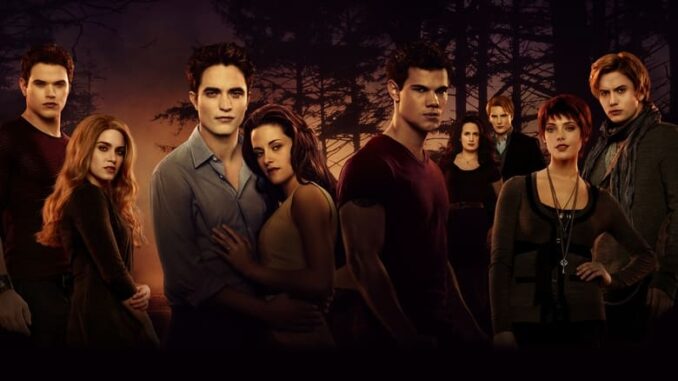
The Undead Never Die: Robert Pattinson and the Enduring Legacy of the Vampire Genre
For years, the mere mention of Robert Pattinson conjured an immediate, almost visceral image: the brooding, impossibly handsome, sparkly vampire, Edward Cullen. His portrayal in the Twilight saga became a cultural touchstone, but also, for many genre purists, a point of contention. The accusation was simple, yet damning: Twilight had ruined vampires. It had stripped them of their menace, their gothic horror, their inherent darkness, reducing them to glittering teen heartthrobs. But now, with a critically acclaimed career spanning gritty thrillers, indie dramas, and the cowl of the Batman, Pattinson is firing back, and his argument is more than just a defensive posture – it’s an astute observation on the enduring, shape-shifting nature of the undead.
The initial outcry against Twilight was understandable, if a tad hyperbolic. For decades, vampires had occupied a hallowed space in popular culture. They were the elegant predators of Bram Stoker’s Dracula, the tortured romantics of Anne Rice’s Vampire Chronicles, the leather-clad punk rock anarchists of The Lost Boys, or the witty, ass-kicking champions of Buffy the Vampire Slayer. Each iteration, though distinct, largely maintained a core essence: dangerous, alluring, and almost invariably, nocturnal. Then came Edward Cullen, who sparkled in the sunlight and obsessed over a mortal high school girl, often with an expression of pained constipation. For those who cherished the blood-soaked legacies, Twilight felt like a sacrilege, an emasculation of a venerable monster. The accusation was that it had not merely added a new chapter, but had actively diluted the very essence of what a vampire could be.
However, to claim Twilight “ruined” the vampire genre is to fundamentally misunderstand the genre itself. Vampires, perhaps more than any other mythological creature, are chameleons. They are a mirror held up to societal fears and desires, constantly adapting, evolving, and reflecting the anxieties of their time. From the aristocratic seducer of Lord Byron’s The Vampyre to the working-class serial killer of Near Dark, or the high-camp melodrama of Hammer Horror, vampires have never been static. Each generation reinterprets them, bending their lore to fit new narratives. Twilight, for all its polarizing elements, simply offered an adolescent lens on immortality, love, and sacrifice, tapping into a vast, new demographic of readers and viewers who might never have picked up Interview with the Vampire.
Pattinson’s quiet, confident dismissal of the “ruined” narrative stems from a clear-eyed view of history. He understands that a single, massively popular interpretation doesn’t erase all others. Instead, it often acts as a catalyst, provoking a counter-reaction or inspiring new directions. Consider the landscape of vampire stories after the Twilight phenomenon:
- “What We Do in the Shadows” (2014 film, 2019 TV series): Emerging just a few years after Twilight‘s cinematic peak, this brilliant mockumentary series swung the pendulum in the complete opposite direction. It stripped vampires of their epic romance and existential angst, instead focusing on the hilarious mundanity of immortal life for a group of ancient, bickering flatmates. It proved that vampires could be utterly, comically ordinary, yet still retain their essential undead nature, often with gruesome results. There’s no sparkling here, just squabbling and the occasional headless victim.
- “Only Lovers Left Alive” (2013): Jim Jarmusch’s art-house masterpiece offered a melancholic, sophisticated vision of two ancient, intellectual vampires, Adam and Eve, navigating a decaying modern world. Their existence is one of quiet contemplation, a love story steeped in history and culture, far removed from teenage angst. This film demonstrated the genre’s capacity for poetic introspection and mature romance, proving that the undead could still embody profound sadness and an elegant weariness, without a single love triangle in sight.
- “True Blood” (2008-2014): Though premiering shortly after Twilight began, True Blood coexisted and thrived, offering a vastly different, decidedly adult take on vampires. Its gritty, overtly sexual, and often violent world presented vampires as a newly integrated, yet still feared, minority. It tackled themes of prejudice, addiction, and politics with a raw, Southern Gothic sensibility that was a world away from Forks, Washington. This series showcased the genre’s ability to be a vehicle for social commentary and visceral, character-driven drama.
- “Midnight Mass” (2021): More recently, Mike Flanagan’s horror miniseries reimagined the vampire as a pseudo-angelic force, a bringer of both miracles and damnation. It used the creature not as a romantic lead or a comedic foil, but as a deeply unsettling catalyst for a profound exploration of faith, community, and existential dread. It pushed the boundaries of what a “vampire story” could even be, demonstrating an enduring capacity for philosophical horror.
These examples illustrate Pattinson’s point perfectly: the vampire genre is a resilient, hydra-headed beast. While one head might sparkle and pine, many others continue to bite, brood, or even bicker over chores. Twilight didn’t ruin vampires; it merely added a new, wildly popular branch to their ever-expanding family tree. It demonstrated that there was a hungry audience for a different kind of vampire narrative, and in doing so, perhaps even inspired other creators to consciously forge new paths, pushing the boundaries of what the undead could represent.
Robert Pattinson, now free from the glittering shackles of Edward Cullen, speaks not out of bitterness, but from a place of earned wisdom. His career, a testament to his versatility, shows that actors, like genres, can evolve beyond their most famous roles. His firing back at the critics isn’t just about defending a past project; it’s about defending the inherent dynamism of storytelling itself. The undead, in all their myriad forms – from the terrifying to the tragic, the comedic to the cosmic – will always find a way to thrive, proving that some stories, much like their subjects, are truly immortal.
